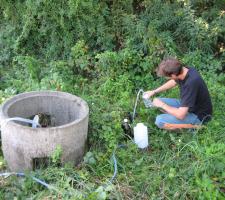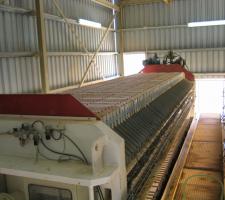EU policy on water: From the water framework directive to the blueprint to safeguard Europe's water resources.
The
It followed great concern coming from the
The WFD’s main aim is embedding pre-existing measures (the Drinking Water Directive of 1988 and the Urban Waste Water Treatment Directive of 1991 as well as various legal provisions on pollution or chemicals having indirect impact on water management) into a coherent and integrated approach, giving the legal basis towards achieving water protection and restoration of clean water across Europe. The main objectives set out in the WFD are to be achieved by 2015.
The upcoming Blueprint to safeguard Europe’s water resources, to be released by the end of 2012, aims to deal more specifically with the most important challenges that arose with the implementation of the WFD, including water pollution, water abstraction for agriculture and energy production, land use and the impacts of climate change.
The Blueprint was conceived in close coordination with the EU’s 2020 strategy, particularly with the Resource Efficiency
Roadmap, and will cover the period up to 2050.
This year, the EC Green Week will focus very specifically on water.
As for water management in the aggregates industry, the European Aggregates Association (
UEPG recently gave an additional boost to its commitment to more sustainable water management across European extractive sites. A Position Paper and Good Practice Guidelines on Water Management will be released soon.
The documents underline that while the impact of the aggregates industry on water is generally low, good management of water usage is essential. In the aggregates industry, water is used only where washing out of incidental clay or other natural organic materials is necessary.
This water is sourced from rainwater or adjacent surface or groundwater, and its use is minimised through sedimentation and recycling. Quarried materials extracted and processed are inert as defined in EU legislation. No chemicals are used in the extraction process (other than the possible incidental use of flocculants in water recycling treatment).
Standard measurement of the quality of discharge water is generally based on the parameters: pH (acidity or alkalinity); TSS (Total Suspended Solids); BOD (Biological Oxygen Demand) and temperature and colour, all of which are very local and rapidly disappear in downstream dilution.
It also highlighted that water recycling and control of any discharge from site are established as good practice imperatives, just as are energy efficiency and environmental management.
Innovative techniques ensure the compatibility of quarrying activity with the general objectives of quality of the Water Framework Directive.
The consideration of measures to protect water and water management are now also included in the impact
assessment of sites, and in European countries a water management plan (covering both surface and groundwater) must generally be included in the general planning, permitting and operation of the quarry location.
The aggregates industry has a proven record of best practices in water management, with an increasing number of case studies published on its website (
In 2010, UEPG also created a Working Group on Water Management, and in 2011 it was welcomed into the Strategic Coordination Group on Water, chaired by the EC, where Member States and stakeholders gather to express their views and concerns on the next steps forward in the European Policy on Water.
In UEPG’s view, a responsible water management programme is a win-win strategy for all players involved. Aggregates extracting companies’ interest in sustainable use of water lies not only in a good public image, but also in significant costs saving good practice.











